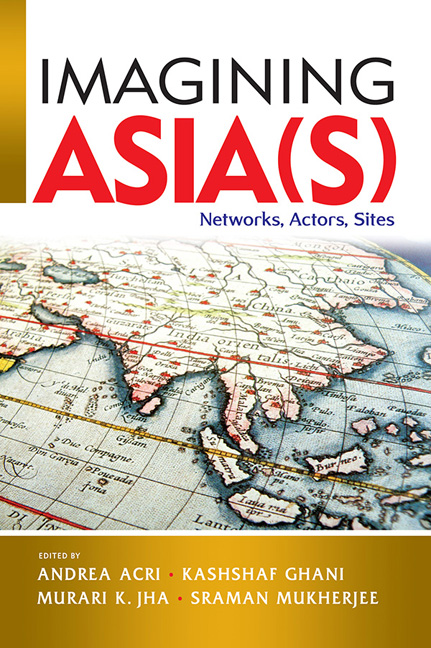Book contents
- Frontmatter
- Contents
- List of Contributors
- Introduction
- Part I Conceptualizing the Region: Past and Present
- Part II Conceptualizing Asia through the Prism of Europe
- Part III Networks of Knowledge Across the Indian Ocean
- Part IV Histories and Geographies of Pilgrimage in Asia
- Part V Trans-Local Dynamics and Intra-Asian Connections across Space and Time
- 10 Sanskritic Buddhism as an Asian Universalism
- 11 Interconnectedness and Mobility in the Middle Ages/Nowadays: From Baghdad to Chang'an and from Istanbul to Tokyo
- 12 Connecting Networks and Orienting Space: Relocating Nguyen Cochinchina between East and Southeast Asia in the Sixteenth and Eighteenth Centuries
- 13 The Highlands of West Sumatra and their Maritime Trading Connections
- Index
13 - The Highlands of West Sumatra and their Maritime Trading Connections
from Part V - Trans-Local Dynamics and Intra-Asian Connections across Space and Time
Published online by Cambridge University Press: 31 January 2020
- Frontmatter
- Contents
- List of Contributors
- Introduction
- Part I Conceptualizing the Region: Past and Present
- Part II Conceptualizing Asia through the Prism of Europe
- Part III Networks of Knowledge Across the Indian Ocean
- Part IV Histories and Geographies of Pilgrimage in Asia
- Part V Trans-Local Dynamics and Intra-Asian Connections across Space and Time
- 10 Sanskritic Buddhism as an Asian Universalism
- 11 Interconnectedness and Mobility in the Middle Ages/Nowadays: From Baghdad to Chang'an and from Istanbul to Tokyo
- 12 Connecting Networks and Orienting Space: Relocating Nguyen Cochinchina between East and Southeast Asia in the Sixteenth and Eighteenth Centuries
- 13 The Highlands of West Sumatra and their Maritime Trading Connections
- Index
Summary
INTRODUCTION
Not much is known about the settlement processes that have contributed to create the unique ethnic and cultural diversity in the highlands of Sumatra. Archaeological fieldwork since 2003 in the upland regions—in Kerinci, the highlands of Jambi (Bonatz et al. 2009; Bonatz 2012; Tjoa-Bonatz 2009, 2015a), and in Tanah Datar, West Sumatra—point to commercial interactions between the highland and maritime regions since the first millennium CE. From 2010 to 2014, an interdisciplinary team under the direction of Dominik Bonatz has undertaken field research in Tanah Datar (literally “flat land”), a valley in West Sumatra in the core area of the Minangkabau community (Figures 13.1 and 13.2). The Institute of Ancient Near Eastern Archaeology at Freie Universität Berlin (FU Berlin) sponsored by the German Research Foundation has pursued excavations and surveys in cooperation with international institutions. Meanwhile, Arlo Griffiths (École française d'Extrême-Orient Jakarta) directed an epigraphic research project. The focus of the project is the reign of King Ādityavarman (c.1347–75), who established the centre of his polity in the highlands of Tanah Datar and issued twenty-two inscriptions from the middle of the fourteenth century. These dated inscriptions (Figure 13.3) provide the chronological anchor and fulcrum of the research project, which deals with the archaeological remains and the reconstruction of regional settlement processes before and after this period (Tjoa-Bonatz forthcoming).
Many fundamental changes can be identified in the societies of Southeast Asia when a new global economy emerged in the fifteenth century, a period characterized by Reid (1993) as the “Age of Commerce”. Scholars have emphasized the importance of the fifteenth century as the starting point for the modern period of Southeast Asian history (see, e.g., Wade and Laichen 2010). When archaeological materials are brought into account, a key question that arises when this shift appeared, probably not as a sudden event, a sharp discontinuity with the former times, but as a gradual change towards new economic modes that were already in existence before 1400 (Miksic 2010, p. 385). The archaeological material at hand to test this hypothesis in island Southeast Asia is rather limited.
- Type
- Chapter
- Information
- Imagining Asia(s)Networks, Actors, Sites, pp. 393 - 424Publisher: ISEAS–Yusof Ishak InstitutePrint publication year: 2019

